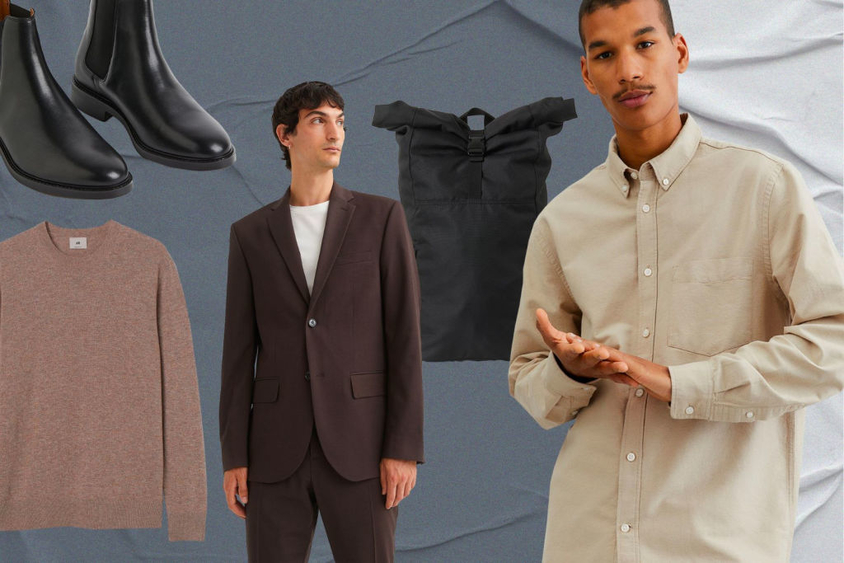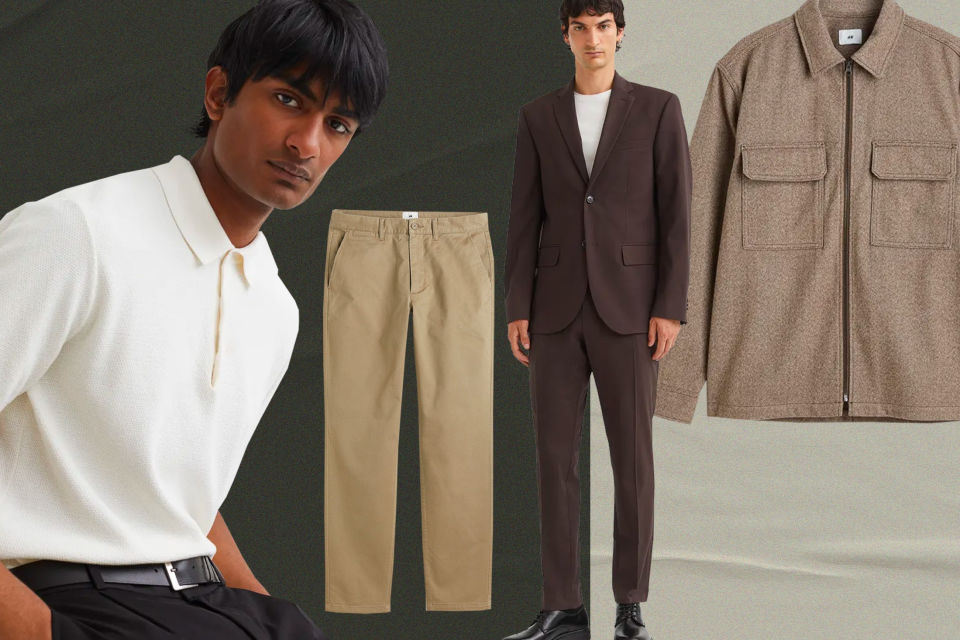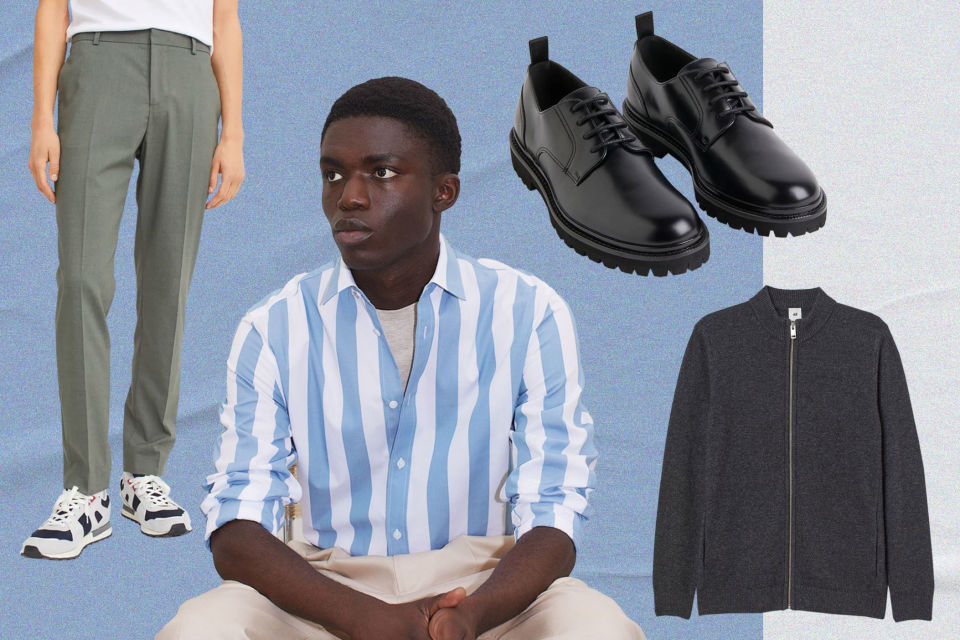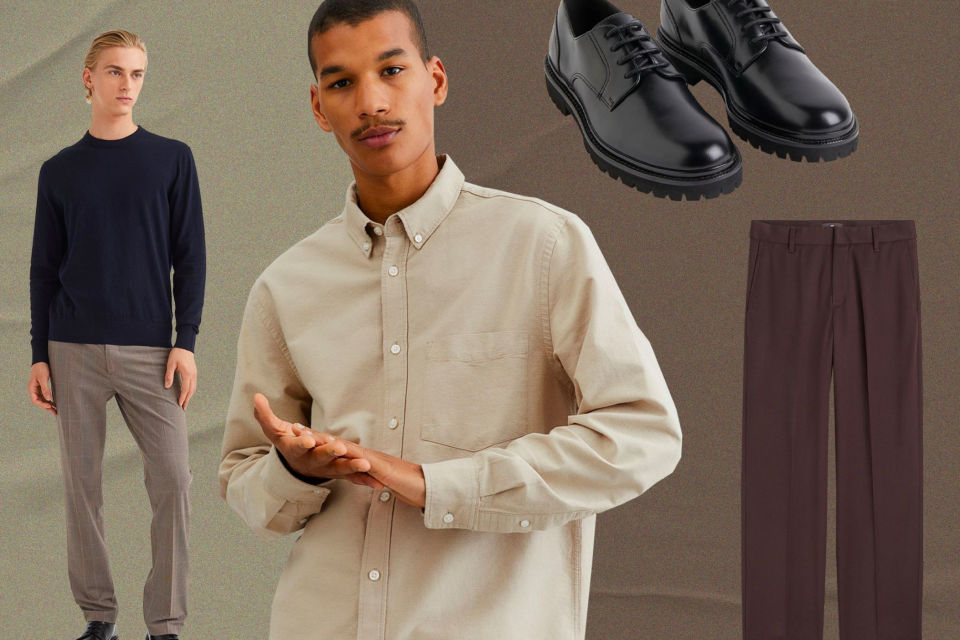
How to build a workwear capsule wardrobe: Thread x H&M
In an alternative reality, we’d all purchase any clothes we want, anytime we wanted – without a negative impact on our wallets, our wardrobe space, and the environment. But in this reality, we tend to need to be a bit more discerning about the clothes we purchase, and that’s where capsule wardrobes come in strong. A capsule wardrobe, in the simplest terms, is a set of complementary clothing that you can mix and match throughout a season (and often beyond).
At H&M and Thread, we’re big advocates of capsule wardrobes – they help all of us create intentional, interchangeable, and focused wardrobes. That means you’re prioritising the items you really need (a bonus for your budget and the environment) and making the most of them for an extended period of time. Sounds good, right?
When should you build a capsule wardrobe
We encourage creating a new capsule wardrobe at the onset of each season, but it will also benefit you to build one around your workwear wardrobe. Whether we’d like to admit it or not, most of us spend the majority of our waking hours in our work clothes, so we might as well make them count.
Whether you’re a seasoned professional with a wardrobe full of crisp Oxford shirts or just beginning to build a work wardrobe from scratch, a capsule wardrobe will serve you well.
So how do you go about building one? We pulled up a chair with stylist Heather Green to learn her top tips for curating a workwear capsule wardrobe. Only question for you is, which item will you invest in first?"
Step 1: Keep your work setting in mind
Unfortunately, there's no one-size-fits-all approach to dressing for work; the professional landscape is a patchwork of different types of careers, all with their own unqiue dress codes. You might work in a creative industry and be afforded more leeway. Or maybe you work in a corporate high-rise with sweeping views of the city (and rigid views on what to wear to the office). Or perhaps you primarily work from the comfort of your sofa, where your top half is all the requires thought (how nice for you).
If you're not clear on where you land on this spectrum, a helpful first step is asking your HR department or hiring manager whether there is a specific dress code or style of dress they expect from you. That way, you avoid showing up in a Don Draper-style suit when the vibe is more of the jeans, trainers, and T-shirts variety.
Step 2: Consider your colour palette
Heather recommends leaning into a neutral palette at work: “The classic combo of navy, back, and tans will always serve you well – they pair seamlessly together, which you’ll massively appreciate on early mornings when you're rushing around."
That said, if you’re looking for a more contemporary hit, a bright colour pop will serve you well. “A punchy plain shirt in a bright shade is an easy way to invite some colour into your look without going overboard,” she adds. “Accessories are a solid entry point for achieving this. I’d recommend a bold backpack or a bright beanie if you work in a more relaxed or creative office environment.” But even if you work somewhere more formal, a colourful or patterned tie or pair of socks can deliver that hit of colour you’re after – and will ensure you don’t blend into a sea of suits.
Step 3: Focus on versatility
When it comes to building the foundations of your workwear capsule wardrobe, it's your best bet to start with the most versatile pieces. They’ll enable you to mix and match more easily so you don’t face the dreaded “what the heck do I wear today?” dilemma.
“We recommend focussing on the core basics you will get the most wear out of – think a mix of smart and smart casual bottoms, some good basic tees, a classic shirt or two, and some heavier knits and outerwear that will see you through the colder days ahead" Heather says.
"When it comes to accessories, stick to the classics: a chunky brogue, a sleek Chelsea boot, and a practical bag that will protect your company laptop on rainy commutes – a winner.” And whereas the novelty of a statement piece might wear off after a wear or two, your basics will continue to feel fresh week after week."
Step 4: Don’t forget to prioritise comfort
Look for pieces that fit to flatter your body rather than clinging to it. No one wants to be tugging on trousers or overheating in turtlenecks this season!
A good blazer or a coat in a regular cut, as opposed to a slim one, will not only create a streamlined silhouette, but it will also be comfortable on your daily commute (and in that three-hour afternoon meeting). And of course, don’t underestimate the power of a cosy cashmere knit under a blazer or pair of trainers on your feet (even if your're just wearing them on your commute).
Step 5: Choose quality over quantity
Now, we certainly don't expect you to spend last month’s hard-earned salary on heaps of new investment pieces. And luckily, building a quality wardrobe doesn’t require that of you.
The secret to buying less but buying better is making sure your wardrobe consists of a few key pieces made with premium materials – think cashmere and wool blends and high-quality leathers. They’ll likely cost you more than your standard cotton basics, but they’ll serve you season and after season and lend your look a bit of an elevated feel.
Step 6: Embrace pieces you can wear after work hours
The biggest mistake you can make when it comes to building your capsule wardrobe is focusing solely on pieces you’ll wear within the confines of your work setting. Instead, think strategically abut the kind of pieces that will take you from work to drink to even the weekend.
“The best part of the more modern working culture we find ourselves in today is that you can look polished and professional, even when not wearing a more formal suit,” Heather shares.
“Relaxed-fitting trousers, well-fitting jumpers, and an unstructured blazer are all items that will take you from the workweek to the weekend with ease."


